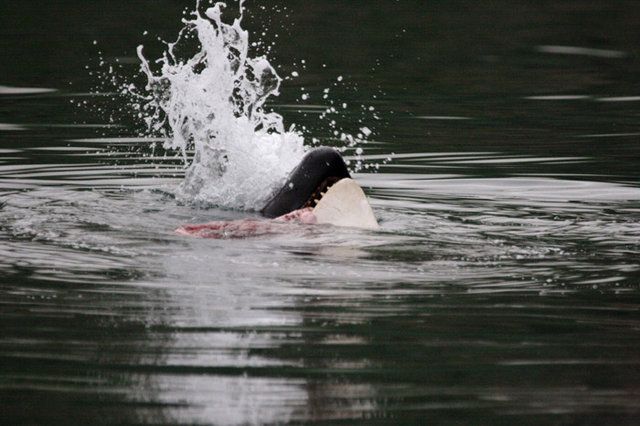|
|
Orca Whale
|
In the Pacific Northwest, wild salmon stocks, a main resident food source, have declined dramatically in recent years. On the west coast of Alaska and the Aleutian Islands, seal and sea lion populations have also substantially declined.
In 2005, the United States government listed the southern resident community as an endangered population under the Endangered Species Act. The southern resident community comprises three pods which live mostly in the Georgia and Haro Straits and Puget Sound in British Columbia and Washington. They do not breed outside of their community, which was once estimated at around 200 animals and later shrank to around 90. In October 2008, the annual survey revealed that seven were missing and presumed dead, reducing the count to 83. This is potentially the largest decline in the population in the past ten years. These deaths can be attributed to declines in chinook salmon.
Noise from shipping, drilling, and other human activities is a significant concern in some key killer whale habitats, including Johnstone Strait and Haro Strait. In the mid-1990s, loud underwater noises from salmon farms were used to deter seals. Killer whales also avoided the surrounding waters. High-intensity sonar used by the Navy disturbs killer whales along with other marine mammals. Killer whales are popular with whale watchers, which may stress the whales and alter their behavior, particularly if boats approach too closely or block their line of travel.
The Exxon Valdez oil spill adversely affected killer whales in Prince William Sound and Alaska's Kenai Fjords region. Eleven members (about half) of one resident pod disappeared in the following year. The spill damaged salmon and other prey populations, which in turn damaged local killer whales. By 2009, scientists estimated the AT1 transient population (considered part of a larger population of 346 transients), numbered only 7 individuals and had not reproduced since the spill. This population is expected to die out.
|
|









